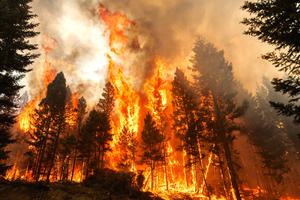In northern India, drones and camera traps deployed to monitor wildlife are being used to surveil women without their consent.
Domestic violence is rampant in the region, and many women spend long hours in the Corbett Tiger Reserve to get away from abusive husbands and fathers. “In the forest nobody is watching us, and we can be carefree,” one local woman recently told researchers. But wildlife monitoring technology is making it harder for women to escape into the woods.
Said a local man, “We are very happy when the Forest Department installs cameras in this part of the forest. Our women come back early or don’t go at all.”
To understand the impact of wildlife monitoring technology, researchers from the University of Cambridge interviewed 270 people living near the reserve. They found that rangers are using drones to chase away women who have the legal right to gather herbs and firewood from the forest. Rangers are also spying on women using camera traps.
“A photograph of a woman going to the toilet in the forest — captured on a camera trap supposedly for wildlife monitoring — was circulated on local Facebook and WhatsApp groups as a means of deliberate harassment,” said Trishant Simlai, lead author of the research, published in Environment and Planning F.
While typically women would sing loudly in the woods to keep tigers at bay, many are now keeping hush to avoid activating camera traps. Staying quiet is putting them at risk of surprise run-ins with wildlife, according to the report. Simlai said that one woman he interviewed has since been killed in a tiger attack.
The findings are a stark warning about the misuse of surveillance technology. “It’s very common for projects to use these technologies to monitor wildlife,” said coauthor Chris Sandbrook, “but this highlights that we really need to be sure they’re not causing unintended harm.”



